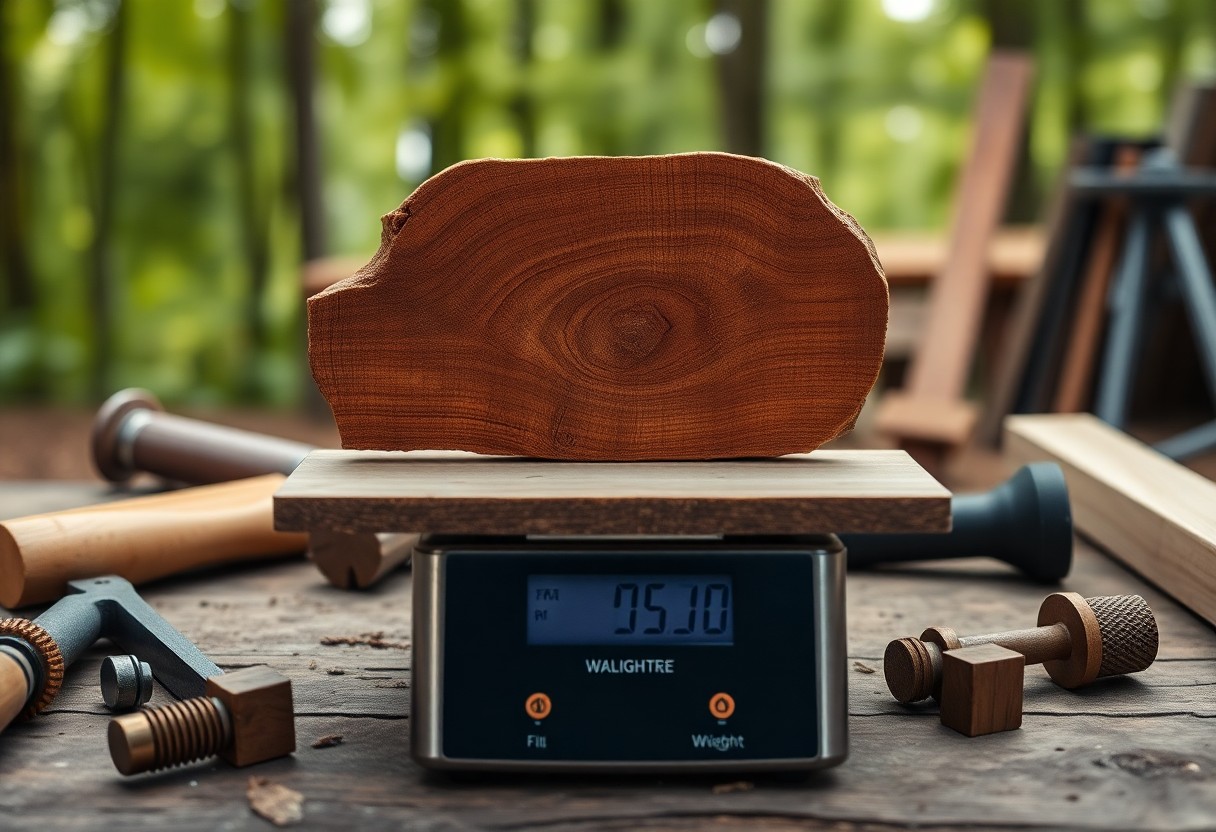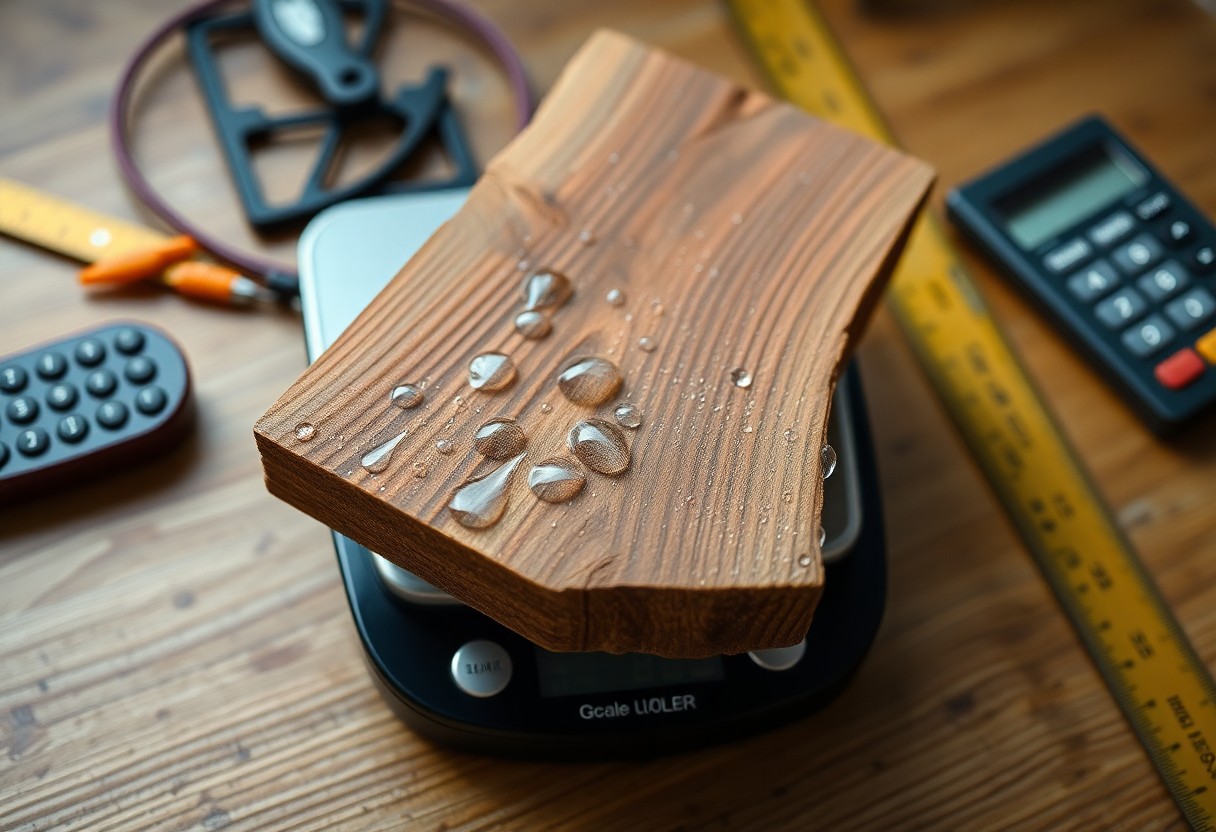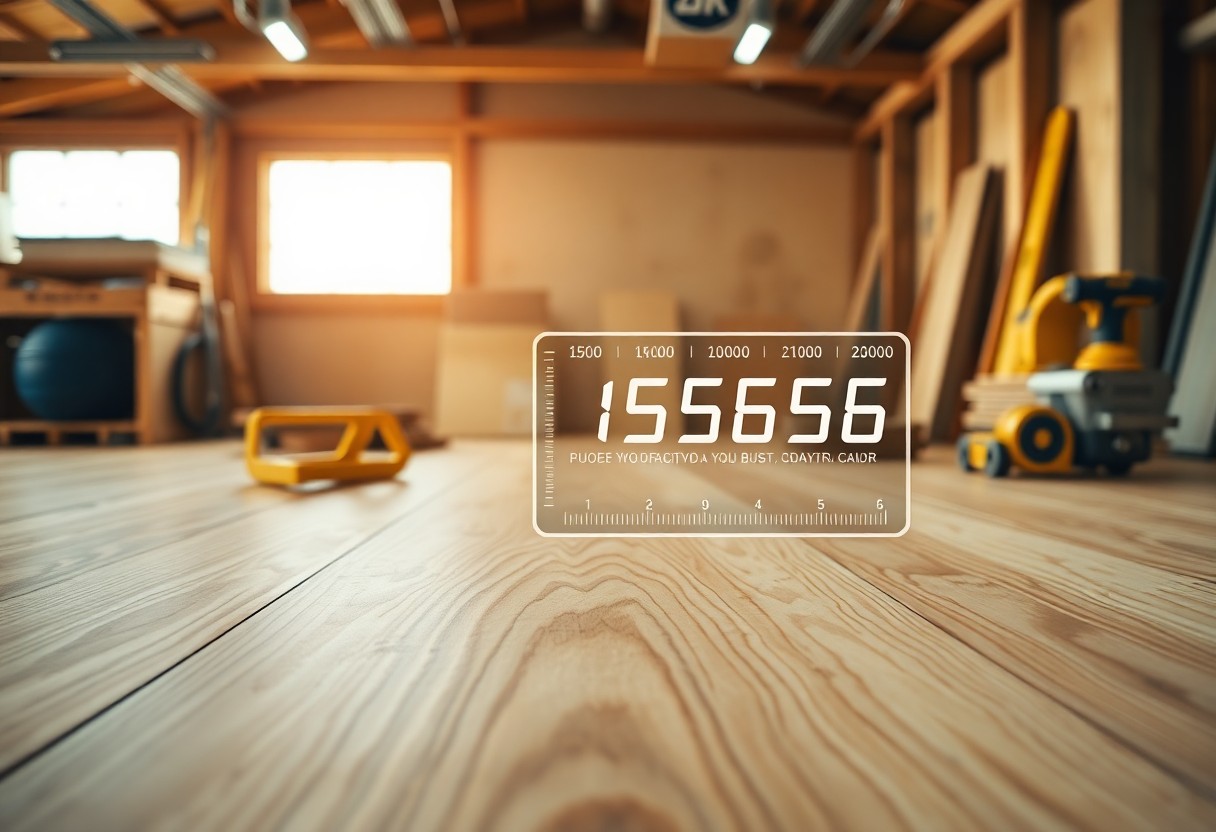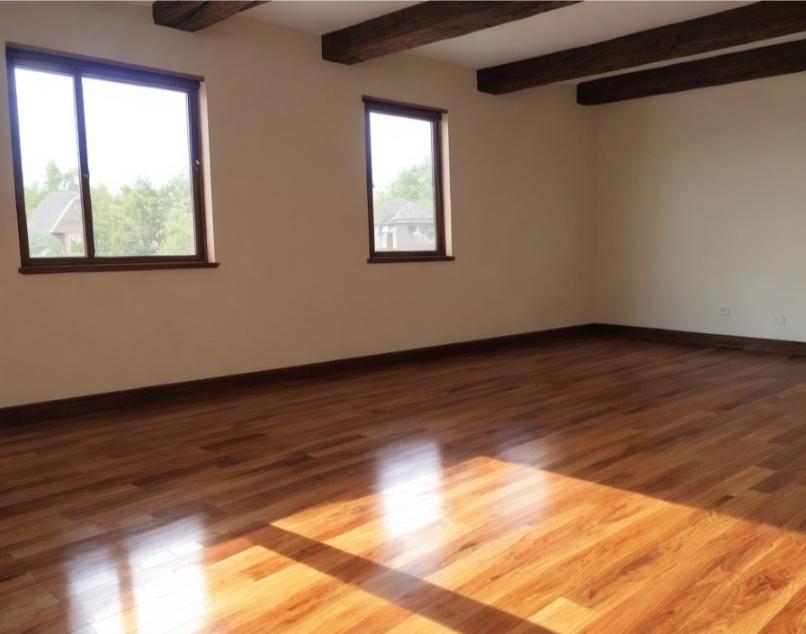You may not realize how much wood expands and contracts with changes in humidity and temperature, but understanding this can significantly impact your projects.
A wood expansion calculator is an invaluable tool that allows you to accurately estimate how much your wooden materials will change, helping you make informed decisions during the design and construction process. With the right calculations, you can ensure your furniture, flooring, or cabinetry maintains its integrity and performance over time, allowing you to confidently work with this beautiful natural material.
Wood Expansion Calculator
While working with wood, it’s imperative to grasp how it expands and contracts in response to changes in humidity and temperature.
This natural phenomenon can influence your projects, from furniture making to flooring installations. Understanding the mechanics behind wood expansion helps you anticipate potential issues, ensuring your work remains aesthetically pleasing and structurally sound over time.
Wood Expansion Calculator
Factors Influencing Wood Expansion
Wood expansion is affected by several factors that you should consider when selecting materials and planning your projects.
- Moisture content of the wood
- Wood species
- Temperature changes
- Grain orientation
- Time of exposure to environmental conditions
Knowing how these variables interact can help you make informed decisions in your woodworking endeavors.
Types of Wood and Their Expansion Rates
Before venturing into projects, it is beneficial to understand how different types of wood behave when subjected to environmental changes. The expansion rates can vary significantly, which in turn affects the durability and appearance of your work. Here’s a concise overview of some common wood types:
| Wood Type | Expansion Rate (inches per inch) |
|---|---|
| Pine | 0.0015 |
| Oak | 0.0025 |
| Maple | 0.0020 |
| Teak | 0.0010 |
| Cedar | 0.0018 |
Perceiving these differences enables you to make strategic choices about which type of wood to use based on your project’s specific requirements.
The rates of expansion can significantly influence the final outcome of your woodworking. By understanding the nature of the wood you are using, you can anticipate how it will behave over time. Here’s an overview of other wood types and their expansion characteristics:
| Wood Type | Expansion Rate (inches per inch) |
|---|---|
| Cherry | 0.0021 |
| Birch | 0.0023 |
| Walnut | 0.0017 |
| Mahogany | 0.0014 |
| Ash | 0.0024 |
- Choosing wood based on expansion can prevent warping.
- Different woods react uniquely to moisture changes.
- Your project’s longevity can be impacted by your wood choice.
- Finish options can also mitigate expansion effects.
- It’s advisable to acclimate wood before installation.
Perceiving these rates enables you to optimize your choice for stability and longevity in your projects.
The Science of Wood Expansion
Now, understanding the science of wood expansion is important for any woodworker or homeowner. Wood is a natural material that responds to environmental conditions, particularly moisture levels and temperature fluctuations. These changes can lead to significant dimensional alterations, impacting everything from furniture to flooring. By comprehending these factors, you can better manage wood products in your projects.
Moisture Content and Its Role
Wood naturally absorbs and releases moisture from the environment, which directly affects its volume. When wood absorbs moisture, it swells, and when it dries, it contracts. Your awareness of the moisture content in wood helps you select the right material for specific applications and enables you to maintain its structural integrity over time.
Temperature Effects on Wood
On the other hand, temperature changes also have a significant impact on wood expansion. As temperatures rise, wood tends to expand; conversely, it contracts as temperatures drop. This temperature-induced movement can lead to gaps or warping in your projects if not managed properly.Temperature Effects on Wood
| Temperature Increase | Wood expands, causing potential warping or gaps. |
| Temperature Decrease | Wood contracts, which may lead to cracks or separation. |
The dimensions of wood can fluctuate with temperature changes, impacting your woodworking outcomes. When you work with wood, it’s important to consider climate conditions in your area, as these aspects can dictate how your projects will hold up over time. Proper acclimation of wood before installation and maintenance strategies can significantly reduce the effects of temperature fluctuations, contributing to the longevity of your wooden structures.Additional Temperature Factors
| Direct Sunlight Exposure | Can cause surface heat build-up, leading to uneven expansion. |
| Humidity Interaction | Combined with temperature, humidity can exacerbate expansion issues. |
Using a Wood Expansion Calculator
Clearly, utilizing a wood expansion calculator can simplify your calculations, ensuring your woodworking projects are precise and successful. These tools take into account the type of wood, environmental conditions, and specific dimensions to help you predict how much your wood will expand or contract. By understanding this information, you can make informed decisions to avoid potential issues in your projects.
Step-by-Step Guide to Using the Calculator
Calculator guides you through the process effectively. Follow these steps:
| Step | Description |
| 1 | Select your wood type. |
| 2 | Input the dimensions of your wood. |
| 3 | Enter the environmental conditions. |
| 4 | Click calculate to see the expansion details. |
Common Mistakes to Avoid
Beside ensuring accuracy in calculations, you should avoid common mistakes that can lead to errors in your projects. Inadequate input details or miscalculating dimensions can yield incorrect results, affecting your project integrity. Always double-check your data and ensure that you understand the specific conditions your wood will experience. Avoid using generalized values when working with different wood types, as these variations can significantly influence expansion rates.
In fact, one of the most frequent errors occurs when users overlook the influence of humidity levels on wood expansion. Failing to consider this variable can skew your calculations, leading to potential gaps or warps in your project. Additionally, neglecting to update your inputs based on the specific environment where your wooden piece will be placed can result in either unwanted expansion or contraction, compromising your work. Always be thorough and precise to achieve optimal results.
Applications of Wood Expansion Calculators
Many industries benefit from using wood expansion calculators to account for the natural fluctuations in wood due to temperature and humidity changes. Whether you are involved in construction, woodworking, or furniture design, understanding how wood expands and contracts can help ensure the longevity and integrity of your projects. These calculators provide vital data for making informed decisions, ultimately leading to better craftsmanship and satisfaction in your work.
Construction and Woodworking
Wood plays a central role in construction and woodworking projects, where precise measurements and material properties are vital. By utilizing wood expansion calculators, you can accurately gauge how much wood will expand or shrink, ensuring that joints fit tightly and structures remain stable over time. This attention to detail can help you avoid potential issues, such as warping or gaps, which can compromise the overall quality of your work.
Furniture Design Considerations
Applications of wood expansion considerations in furniture design are vital for creating durable and functional pieces. Understanding the movement of wood can guide you in selecting appropriate materials and making design choices that enhance stability and aesthetics.
Considering the potential for wood to expand and contract in various environments is an important aspect of furniture design. You may want to choose components that accommodate this movement, such as using floating tenons or allowing for slight gaps in joints. By factoring in your local climate and expected conditions, your designs will remain aesthetically pleasing and functional over time.
Comparing Wood Expansion Calculators
Despite the variety of wood expansion calculators available, each tool may offer different features that cater to your needs. Understanding how they compare can help you make an informed choice. Below is a simplified comparison of popular calculators:
| Calculator | Key Features |
|---|---|
| Calculator A | Simple interface, multiple wood species, basic settings |
| Calculator B | Advanced calculations, humidity adjustments, user-friendly |
| Calculator C | Mobile app, offline access, real-time updates |
Available Tools and Software
For those seeking wood expansion calculators, various software solutions and online tools are at your disposal. You can find calculators that provide insights for both professionals and DIY enthusiasts, making it easier to select the right tool for your project.
Key Features to Look For
Before making a selection, it’s beneficial to understand what features matter most. Key features may include:
- User-friendly interface
- Support for multiple wood species
- Customization options for dimensions
- Humidity and temperature adjustments
- Exportable results and reports
The right combination of these features can enhance your experience and improve accuracy in wood expansion calculations.
At the end of the day, assessing these options allows you to find a calculator that fits your specific wood project. Additional features to consider might be:
- Cloud-based accessibility
- Integration with other design software
- Regular updates and customer support
- Clear instructional guides
The best tool will not only help you get accurate measurements but also make the entire process more efficient and effective.
Best Practices for Managing Wood Expansion
To effectively manage wood expansion, it’s necessary to understand the conditions that lead to changes in moisture content. By considering factors like humidity, temperature fluctuations, and the type of wood used, you can devise strategies to mitigate damage. Implementing proper design techniques and allowing for expansion gaps in your projects can significantly enhance the durability and longevity of your wooden structures.
Preventive Measures
After selecting the right type of wood for your project, take preventive measures to minimize expansion effects. Use finishes that seal the wood effectively to decrease moisture absorption and maintain stable humidity levels in your environment. Ensuring proper acclimatization of wood before installation can also prevent issues later.
Maintenance Tips
Above all, regular maintenance will help you manage wood expansion effectively. Here are some tips to follow:
- Inspect wooden surfaces regularly for signs of warping or cracking.
- Keep your indoor environment balanced in humidity and temperature.
- Refinish surfaces as needed to maintain the integrity of sealants.
- Ensure good air circulation around wood installations.
Recognizing these signs early will save you time and money in the long run.
Further, consistent attention to maintenance will prolong the life of your wooden assets. By following these practices:
- Monitor overall humidity levels using a hygrometer.
- Adjust HVAC systems to maintain stable conditions.
- Utilize dehumidifiers during peak humidity seasons.
- Address any leaks or moisture issues promptly.
Recognizing the importance of maintenance will help you safeguard your investment in wood products.
To wrap up
Drawing together the insights on using a wood expansion calculator, you can make informed decisions regarding your woodworking projects. This tool enables you to accurately predict how wood will react to changes in temperature and humidity, ensuring that your structures remain stable and aesthetically pleasing. By incorporating this knowledge into your planning, you enhance the durability of your work and minimize the risk of issues stemming from wood movement. Take advantage of this resource to optimize your craftsmanship and achieve the best results in your woodworking endeavors.








